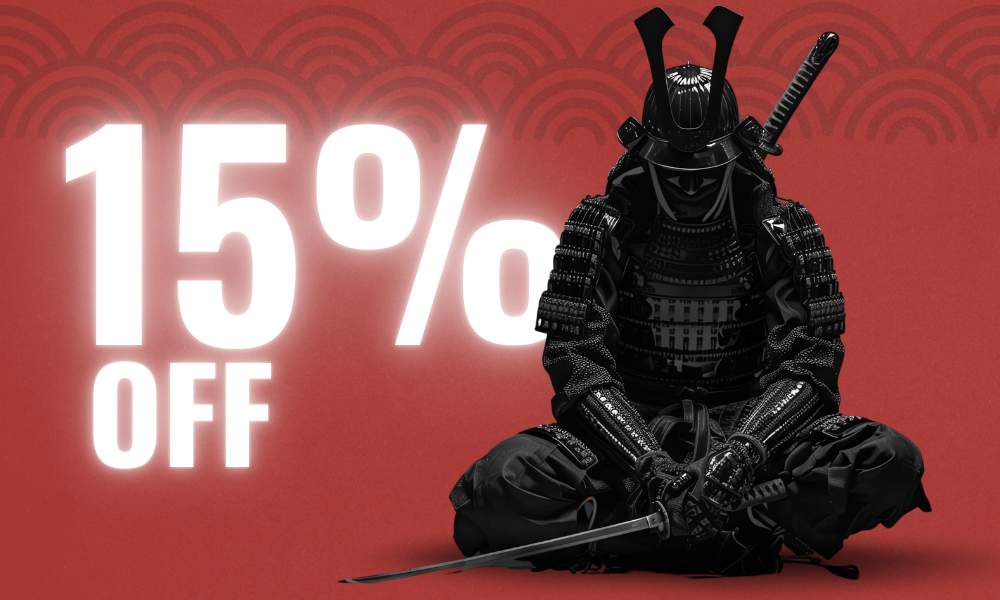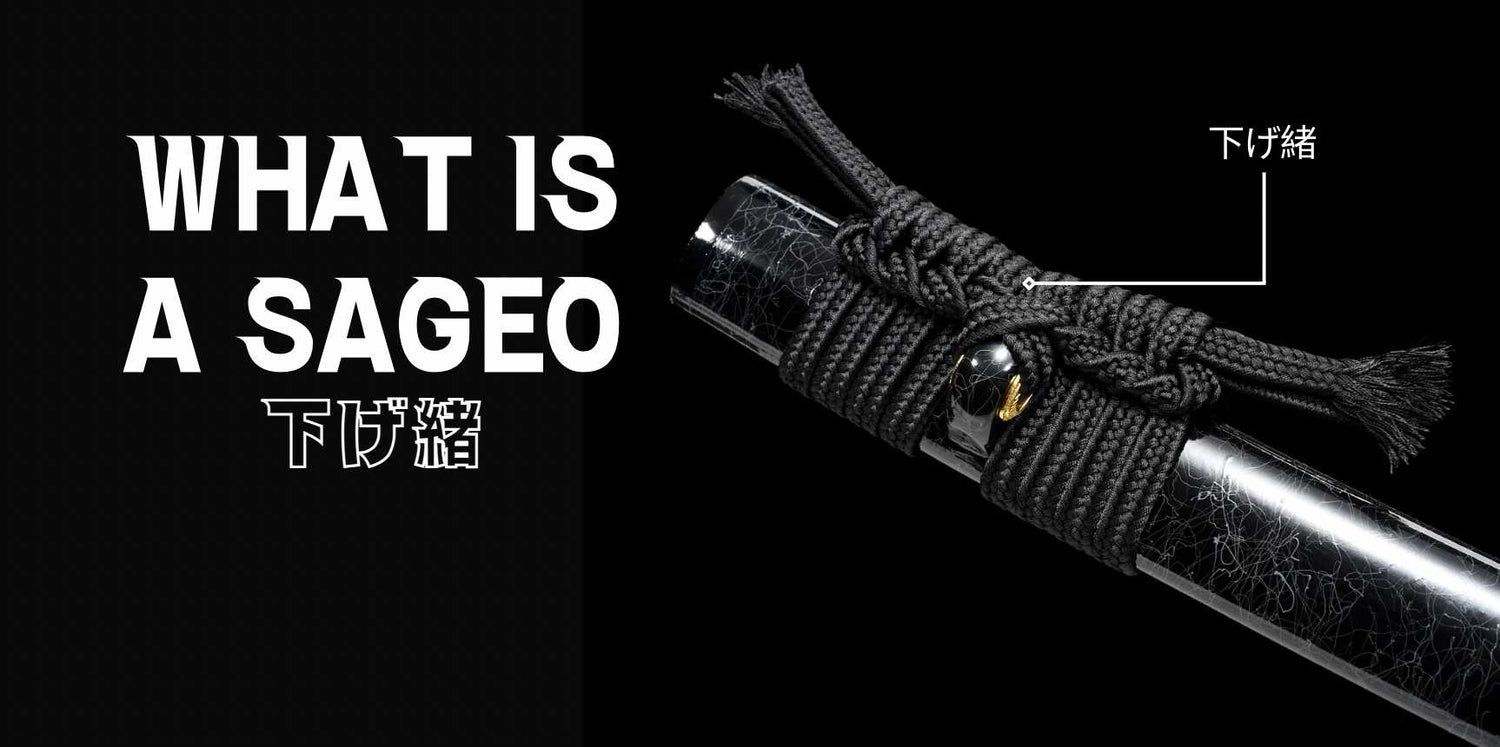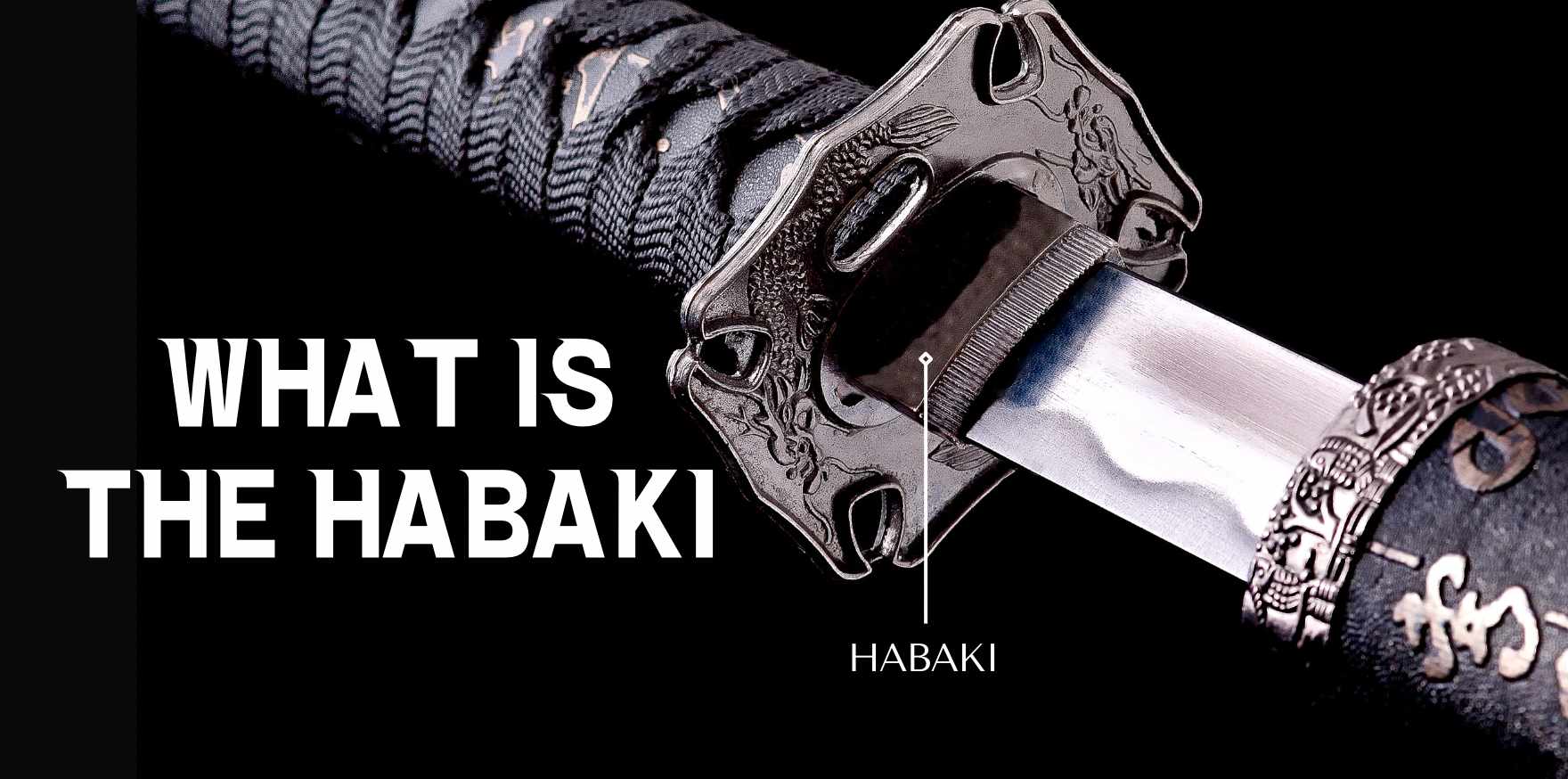What is a sageo
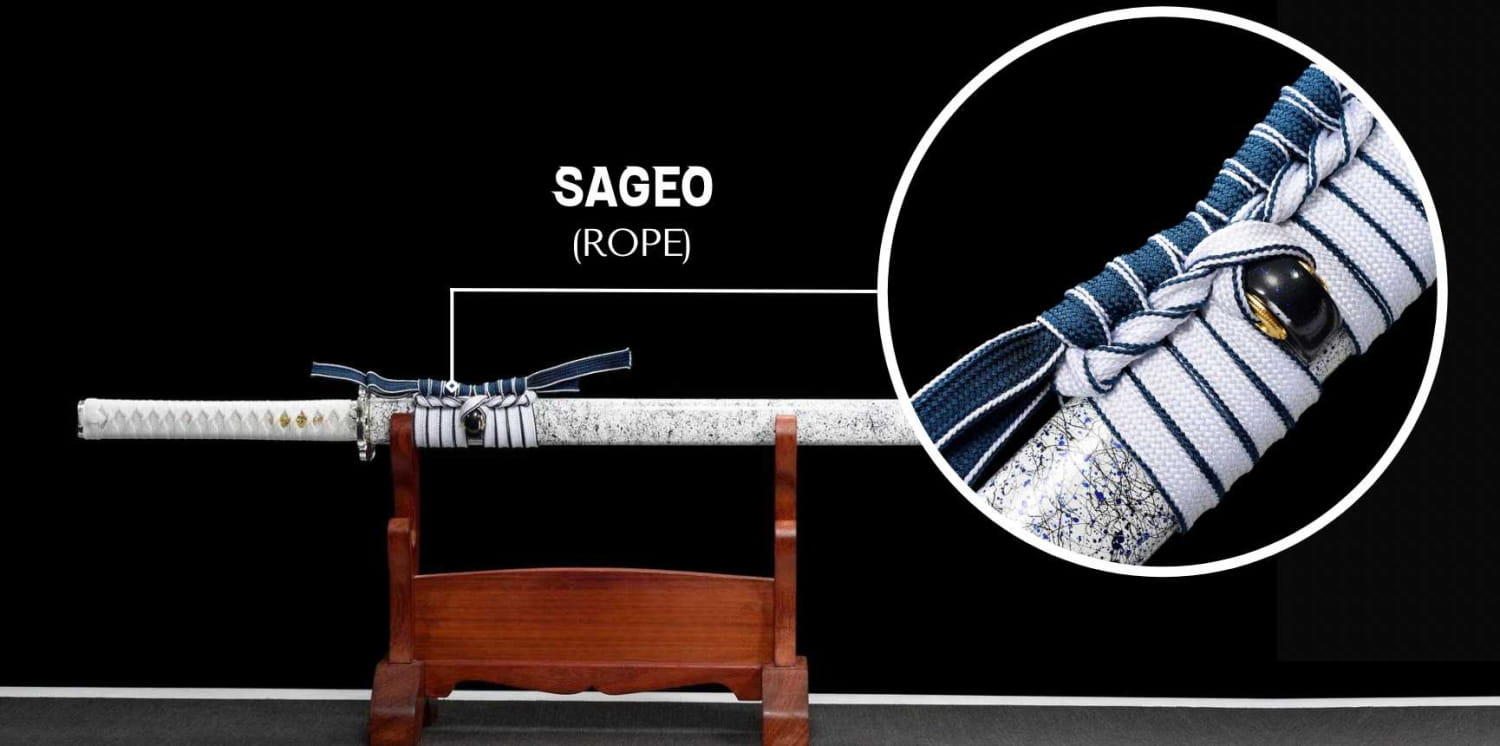
Within the world of Japanese swords, or katanas, lies a component known as the sageo. A sageo is a cord used to secure a Japanese sword (katana) to the belt (obi). It is usually made of silk or other strong, durable material. The sageo is loops through the hilt of the sword (tsuba), and is then tied to the belt. This strategic placement guarantees that the katana remains securely in position and eliminates the risk of the sword falling out of its scabbard.
While the sageo serves a functional purpose, it also adds a personalized aesthetic touch to the katana through an array of colors and patterns.
Sageo Length
Generally, the length of the sageo extends about four feet, though this length remains subjective to individual preference and comfort levels. For some, a longer sageo that wraps around the scabbard feels ideal, while others may favor a shorter sageo that drapes down the side.
As a starting point, consider a sageo length that falls between 12-18 inches (30-45 cm) – long enough to grasp easily, yet short enough to avoid becoming cumbersome or interfering with the katana's use. Remember, the sageo serves purposes beyond merely securing the sword to your belt; it also lends itself to various techniques and maneuvers. Feel free to experiment with different lengths to discover the optimal sageo length for you.
How to Tie Sageo
The process of tying a sageo varies greatly among individuals, with methods ranging from simple knots to more intricate designs. Regardless of the style you choose, it's vital to ensure the sageo securely fastens to prevent the katana from slipping.
One prevalent method of tying the sageo involves folding the fabric in half and looping it around the saya (scabbard). Once this step is complete, you must make a knot at the sageo's base to secure it.
If your katana features a sageo, remember to pay attention to the cord when drawing or sheathing your blade. There's a risk that the cord could catch on the sword's edge, leading to entanglement. If this occurs, untangling the sword and the sageo without causing damage to either can prove challenging.
When not in use, consider wrapping the sageo around the katana and tucking it into the obi. This technique keeps the cord from tangling and facilitates drawing the sword when needed.
Exploring Different Sageo Knots
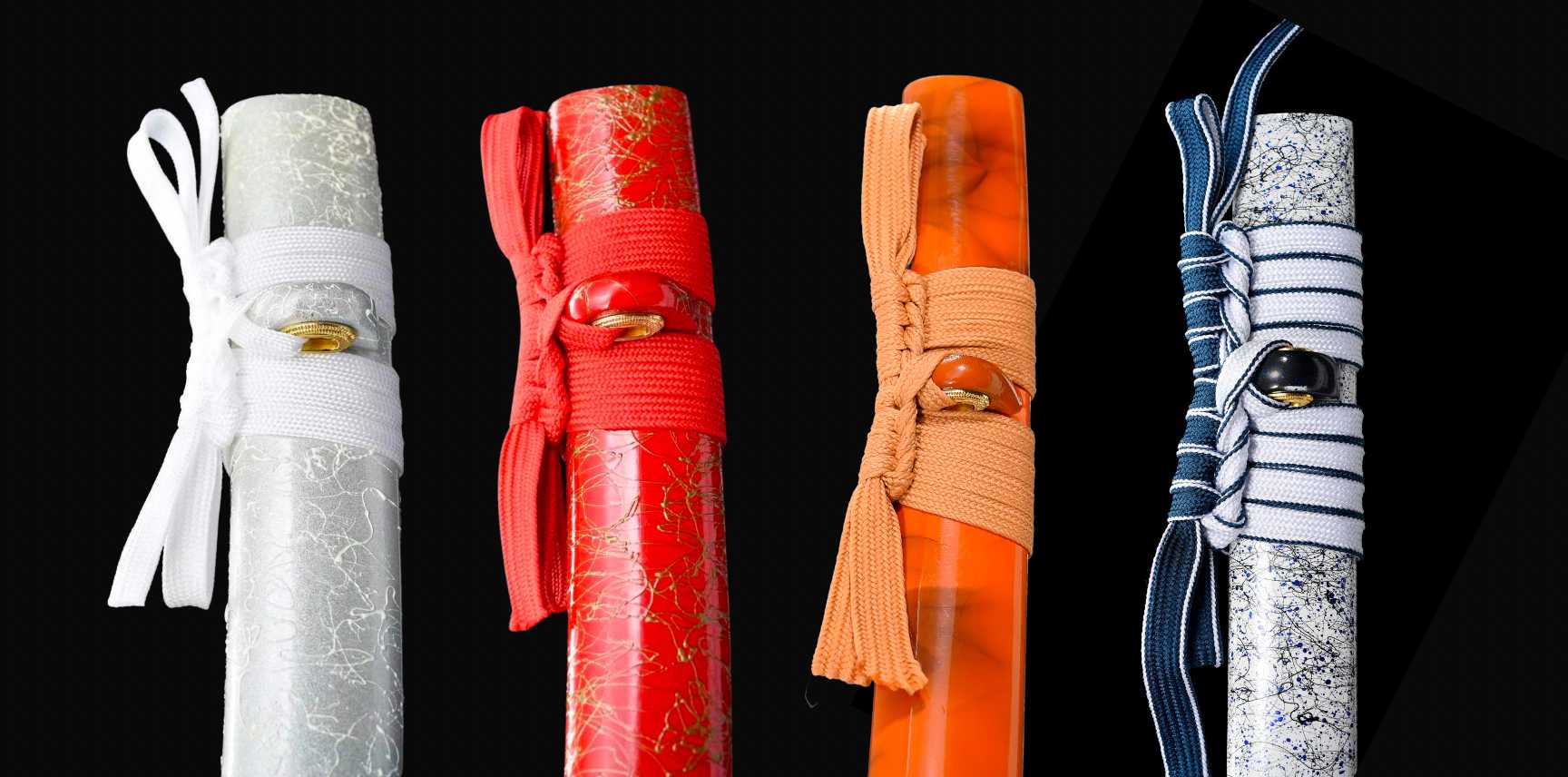
If you're seeking a more creative approach to your sageo, experiment with various knots or braid the fabric. You can personalize your sageo, making it unique to your style:
- Butterfly Knot: This decorative knot adds a touch of flair to your katana. While not as sturdy as the double slip knot or the figure eight knot, it can infuse personality into your sword.
- Daimyo Musubi Knot: This knot, which was commonly used in ancient Japan, involves tying two cords in a specific manner. The cord ends then wrap around each other to form a loop, pulled through the knot's center and tightened to shape the distinctive Daimyo Musubi knot.
- Myoga Musubi Knot: A Japanese knot used to secure items like obi sashes and kimono cords. Also known as the "finger loop knot" due to its tying method.
- Ronin Musubi Knot: A decorative and secure way to finish a string or cord, useful for both cord-end finishing or creating a loop in the cord's middle.
Feel free to explore these knot styles and see what works best for you. The sageo, though often overlooked, is a unique aspect of katana wielding that combines aesthetics with function. The more you delve into the world of sageos, the richer your experience with katanas will become.
If you want to learn more about katana, discover our blog post about katana kurikata, an unknow part of the katana scabbard!
To sum-up:
- The sageo is a cord used to secure a katana to the wearer's belt, contributing both to the sword's stability and its aesthetics.
- While the standard length of a sageo is around four feet, the best length depends on personal preference and comfort. It should be easily grasped yet not interfere with the katana's use.
- Various techniques exist for tying a sageo, all focusing on securely fastening the sword to prevent accidental slips.
- Different knot styles can add an element of personalization to your katana, making it unique to your style. The butterfly knot, Daimyo Musubi knot, Myoga Musubi knot, and Ronin Musubi knot are some examples you can explore.


